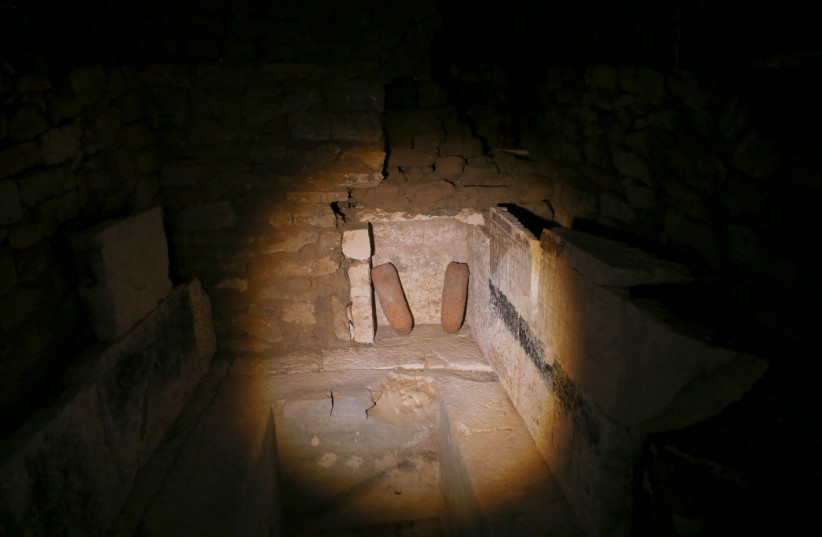An Egyptian archeological expedition in late April discovered an ancient Roman pottery workshop at the Tibet-Matrouh site, west of Alexandria.
The team found kilns carved into the rock at the site, one of which is very well-preserved. One of the kilns was likely used for making lime that may date to the Byzantine era (c. 395 CE - 640 CE).
Lime was an important binding in Roman concrete. They also found amphorae, containers with pointed bottoms designed to fit tightly together for safe transport over land or sea.
The lime-making kiln was partially destroyed to make way for a cemetery in the Middle Ages, and the team found nearly one hundred graves. One of the graves belonged to a pregnant woman, and the archeological team in Tibet-Matrouh plans to uncover more information about the individuals buried there. Dr. Ayman Ashmawy, Head of Egypt's Ministry of Tourism and Antiquities, said that the expedition also discovered another building to the south of the kilns, which was likely used to store utensils for daily use. Archeologists found a large stash of cooking utensils and tableware there. There they also found pestles, weights and more amphorae.
The archeological team found another room southward of the kilns, which may have been used for cooking and selling food.
The room contained amphorae with preserved fish bones inside, as well as stoves (presumably for food preparation), and coins were strewn about on the floor. According to Dr. Ibrahim Mustafa, the head of the archeological team, most of the coins date back to the Ptolemaic era (c. 305 BCE - 30 BCE).
Yet another room was discovered, which the archeologists hypothesize was meant for ritual activities. In this room, they found a raised platform, as well as some poorly preserved terra-cotta statues in the likeness of Harpocrates, the Egyptian god of the sunrise, who was later adopted by the Greeks as the god of silence and secrets.
The mission also found various parts of terra-cotta statues and ritual objects connected to the god Beset, the Egyptian goddess of fertility and motherhood.
Lastly, the team found fishing hooks and the anchor of a boat, leading them to conclude that past residents of the area were avid fishermen.

